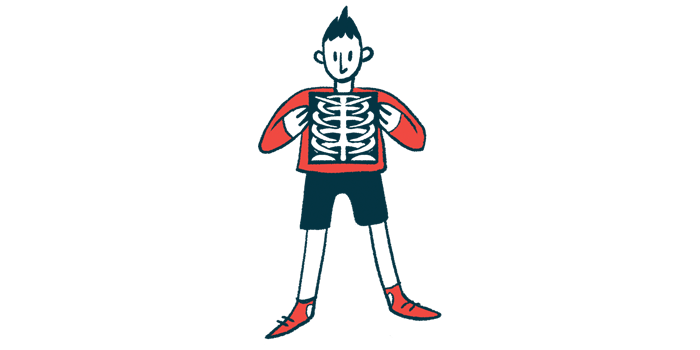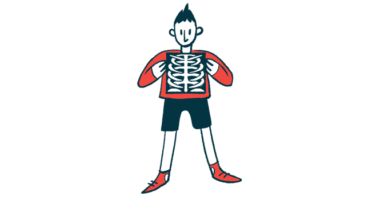Weaker Bones of Hypermobile EDS May Be Driven By Limited Activity
Exercise favored to boost bone density and mineral content, avoid fractures

Poorer bone density and mineral content can be common in people with hypermobile Ehlers-Danlos syndrome (hEDS), likely as a result of reduced physical activity, a study indicates.
“Based on the results of this study, we suggest that health care workers recommend, like in healthy individuals, regular physical activity and muscle strength training in individuals with hEDS and G-HSD [generalized joint hypermobility spectrum disorder] for bone maintenance,” the researchers wrote.
The study, “Bone parameters in hypermobile Ehlers-Danlos syndrome and hypermobility spectrum disorder: A comparative cross-sectional study,” was published in the journal Bone.
Bone health key for determining risk of bone fractures
hEDS and generalized joint hypermobility spectrum disorder (G-HSD) are both characterized by disease symptoms such as unusually mobile joints, chronic pain, and fatigue. People with either condition commonly find engaging in physical exercise difficult and can have diminished muscle strength.
While this can affect bone health, little research has been done in adults with hEDS or G-HSD. A team of scientists at Ghent University, Belgium, set out to learn more.
“As individuals with hEDS and G-HSD have gait impairments, reduced coordination and balance, and higher incidence of falls, insight in the bone characteristics of this population is of high importance to estimate their fracture risk,” the researchers wrote.
The study included 20 women with hEDS, 20 with G-HSD, and 37 women with neither condition as a control group; their mean age ranged from 40.8 to 43.8. People with hEDS or G-HSD scored significantly lower on measures of physical activity than controls, but no differences in medical history were observed across the three groups.
A technique called dual energy X-ray absorptiometry, or DXA, was used to measure bone density and mineral content, as well as muscle and fat mass, in all these people.
“This study was the first to evaluate bone mass, density, geometry, and estimates of bone strength in individuals with hEDS and G-HSD diagnosed according to the most recent criteria of 2017,” the scientists wrote.
Significantly lesser muscle mass were evident in people with hEDS or G-HSD relative to controls. There were no significant differences between the two patient groups.
Patients in both groups also had significantly lower bone mineral content in the cortical bone area (the dense outermost layer of bone) compared with controls, and average cortical bone area was significantly smaller in individuals with hEDS or G-HSD.
hEDS patients also had reduced bone mineral content in trabecular bone, a type of spongy bone tissue, and significantly lower bone density relative to the control group.
While these differences were statistically significant in initial comparisons, when the researchers made statistical adjustments to account for differences in physical activity, most measures were no longer significantly different.
This suggests that the difference in bone health is driven mainly by a lack of mechanical load, the scientists noted. In other words, since people with hEDS or G-HSD tend to be less active, their bones do less work to support their bodies, resulting in less activation of biological pathways that normally help to maintain bone health.
“This study showed no different bone profile between individuals with hEDS and G-HSD, which suggests that their bone impairments might not be reflected by the different diagnostic classification,” the researchers wrote. “Results suggested lower cortical bone mineral content and smaller cortices in individuals with hEDS and G-HSD, and lower trabecular bone mass and density in individuals with hEDS” relative to a control group, “which might be largely explained by lower mechanical loading.”
Findings indicate that regular physical exercise could help to improve bone health for people with hEDS or G-HSD, the researchers concluded.







